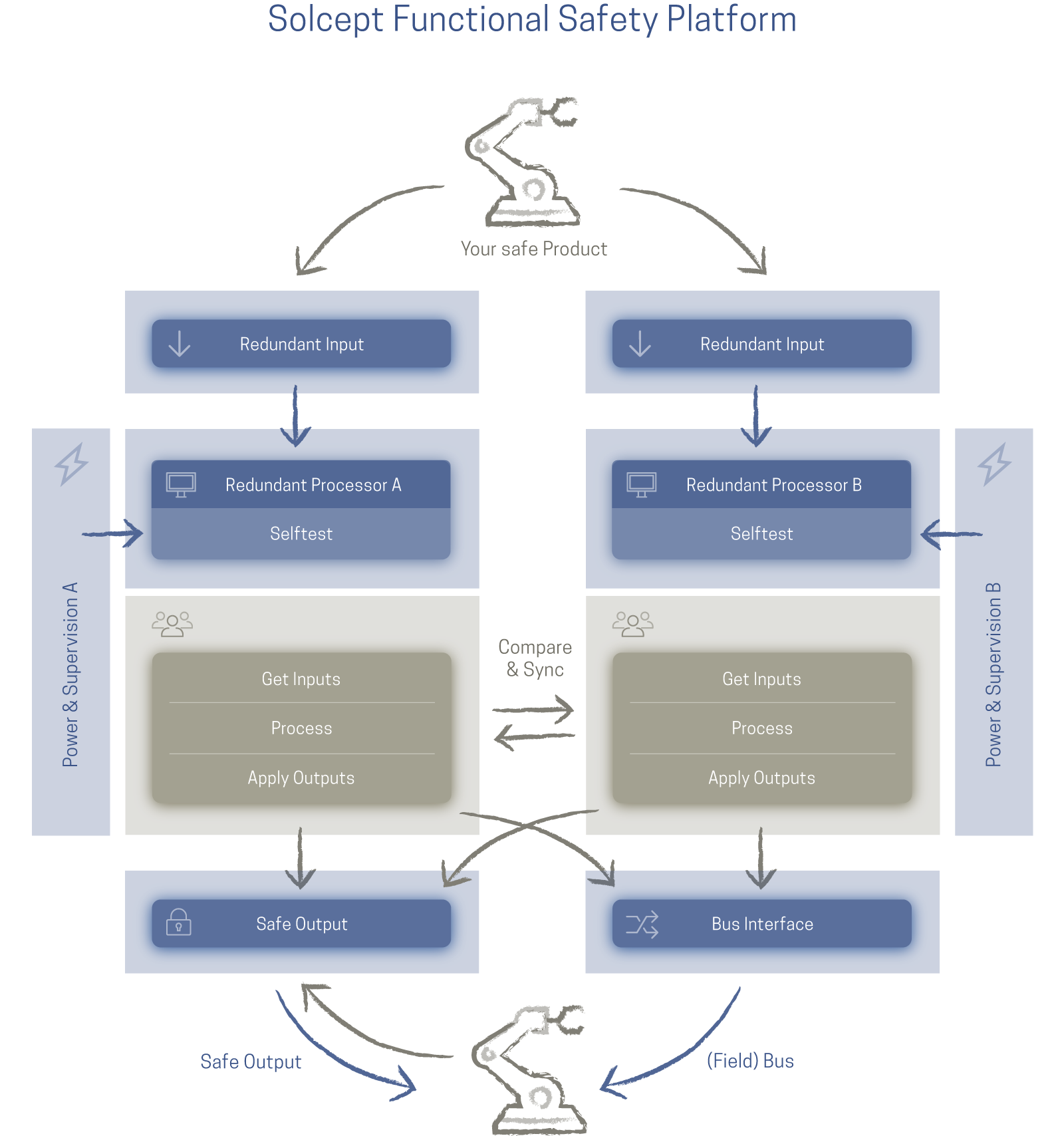
Functionality of the Standard Design
The platform offers these options (see also the drawing above: blue part):
- Secure inputs
- redundant digital or analog inputs
- redundant I2C or SPI
- Safe bus connection
- to safety fieldbuses
- to proprietary solutions or communication with your microcontroller
- Any safety functions
- Safe outputs
- redundant shutdown
- readback of the output state
The non-functional requirements that the design fulfills are also important. These are often the larger limitation than the functional aspects:
- Safety architecture (1oo1 or 1oo2 (non-diverse redundant))
- ISO 13849 PL a..e
- IEC 62061 SIL 1..3
- IEC 61508 SIL 1..3
- or other standards of your industry
- Safety mechanisms
- hardware monitoring (power supply, clock sources, interfaces ...)
- fault monitoring (single failure, common cause failure, program flow monitoring ...)
- watchdog timer/ clock monitoring
- power supply monitoring
- Data security
- Secure Boot
- secure certificate and key storage
- encryption
- identification
- Industrial quality
- temperature range -40..+85 °C
- long product life (long-term availability)
- EMC and radio certification
- developed according to Solcept processes (CMMI for Development (Maturity Level 3), ISO 9001)
Your Application
The specific application (developed in C) can include, but is not limited to:
- Monitoring
- Shutdown of drives
- Safe indications (operating status...)
- Any other safety functions
Technology Base
This Standard System Design is based on the following technologies:
- Microcontroller
- Renesas RX or Arm Cortex
- Operating system
- none (bare-metal) (on request SAFERTOS (FreeRTOS))
- Safety
- ECC-RAM, ECC
- Security
- unique ID
- cryptography unit
- Interfaces & Protocols
- safe fieldbuses
- Safety over EtherCAT (FSoE)
- PROFIsafe
- openSAFETY
- proprietary safe communication (Black-Channel)
- I2C/ SPI
- UART
- LIN, CAN, IO-Link
- to sensors/ actuators...
- USB, UART
- SPI, I2C
- ADC, DAC
- current/ voltage interfaces
- safe fieldbuses
